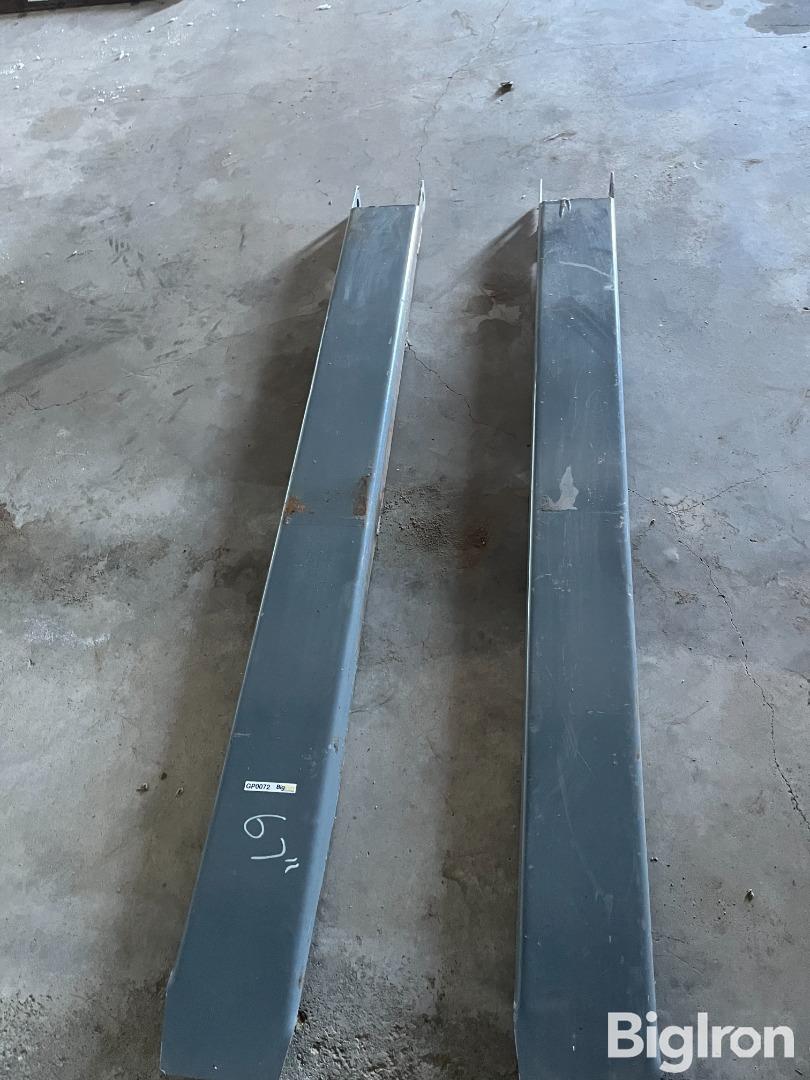Maximize Your Reach: The Ultimate Guide to Forklift Extensions
Maximize Your Reach: The Ultimate Guide to Forklift Extensions
Blog Article

In the world of material handling, maximizing efficiency is key to achieving operational success. One way to enhance your forklift's versatility and performance is through the use of forklift extensions. These simple yet effective additions can significantly increase your lifting capabilities, allowing you to handle longer and heavier loads with ease.
Forklift extensions are designed to fit over your existing forks, providing extra length and support to accommodate various types of materials. Whether you're working in a warehouse, construction site, or distribution center, having the right equipment can make all the difference. Understanding how to use these extensions properly will not only boost your productivity but also improve safety in your work environment. Let's dive into the essentials and explore how forklift extensions can help you maximize your reach and efficiency.
Types of Forklift Extensions
Forklift extensions come in various types, each designed to cater to different lifting needs and applications. The most common type is the fork extension, which simply adds length to the existing forks of a forklift. These extensions are typically easy to attach and remove, making them ideal for situations that require variable load handling. They are available in various lengths, allowing operators to customize their forklift for specific tasks, whether moving pallets or other materials.
Another type of forklift extension is the fork attachment, which can include features like side shifters or clamps. These attachments enhance the versatility of a forklift by allowing it to handle a wider range of loads. For example, side shifters enable the operator to move the forks sideways without repositioning the entire forklift, making it easier to load and unload materials in tight spaces. Such extensions are particularly useful in warehouses and distribution centers where space is limited.
Lastly, there are specialty extensions designed for unique applications. These can include extensions for handling cylindrical objects, such as pipes or drums, and other custom designs tailored to specific industry needs. Specialty extensions often require more technical understanding for proper installation and use, ensuring that the forklift operates safely and efficiently. Choosing the right type of extension is crucial for maximizing productivity and ensuring safety in material handling operations.
Benefits of Using Extensions
Using fork lift extensions can significantly enhance the efficiency of material handling operations. These extensions provide additional length to the existing forks, allowing operators to lift and transport larger and heavier loads without the need for multiple trips. This not only saves time but also improves productivity, making it an excellent investment for warehouses and distribution centers.
In addition to increased lifting capacity, fork lift extensions offer improved safety. By allowing for safer handling of oversized items, they reduce the risk of accidents and injuries associated with unstable loads. Operators can navigate tighter spaces more effectively while maintaining control over their loads, which contributes to a safer work environment for all personnel on the job site.
Cost-effectiveness is another advantage of utilizing fork lift extensions. Instead of purchasing new equipment to manage larger loads, investing in extensions can expand the capability of existing fork lifts at a fraction of the cost. This approach minimizes capital expenditure while maximizing the utility of current assets, making it a smart choice for businesses looking to optimize their operations without breaking the bank.
Installation and Safety Guidelines
When installing fork lift extensions, it is crucial to ensure they are compatible with your forklift model and the load being managed. Start by thoroughly inspecting the extensions for any signs of damage or wear before installation. Properly align the extensions with the fork tines, and securely clamp them in place according to the manufacturer's instructions. This ensures a stable attachment that can safely support the weight of the load.
Forklift Parts
Safety is paramount when using fork lift extensions. Operators should always check the manufacturer's weight capacity and ensure that it is not exceeded. Additionally, the load should be balanced and centered on the extensions to prevent tipping or instability during lifting. Operators must also be trained in proper lifting techniques to maintain safety standards and avoid accidents on the work site.
Lastly, always conduct a functionality test after installing the extensions. This includes lifting a test load at a lower height to assess stability and control before proceeding with normal operations. Regularly inspect the extensions for any signs of wear or damage during ongoing use, as maintaining equipment in optimal condition is essential for safe and efficient operation.
Maintenance Tips for Longevity
To ensure the longevity of your forklift extensions, regular inspection and maintenance are essential. Start by checking for any signs of wear or damage before each use. Look for cracks, bends, or signs of weld failure. Addressing these issues early can prevent more significant problems down the line. Additionally, keep your extensions clean and free from debris that could interfere with their operation or lead to corrosion.
Lubrication is another crucial aspect of maintaining forklift extensions. Regularly apply the appropriate lubricant to any moving parts to minimize friction and reduce wear. This will not only enhance the performance of the extensions but also contribute to their overall lifespan. Always refer to the manufacturer's guidelines for the best type of lubricant to use, ensuring you are providing optimal care for your equipment.
Lastly, be mindful of the weight limits specified by the manufacturer. Overloading your forklift extensions can lead to premature failure and safety hazards. Always ensure that your loads are within the recommended limits, and if you're unsure, consult the specifications provided. Maintaining these best practices will help you maximize the efficiency and lifespan of your forklift extensions.
Report this page